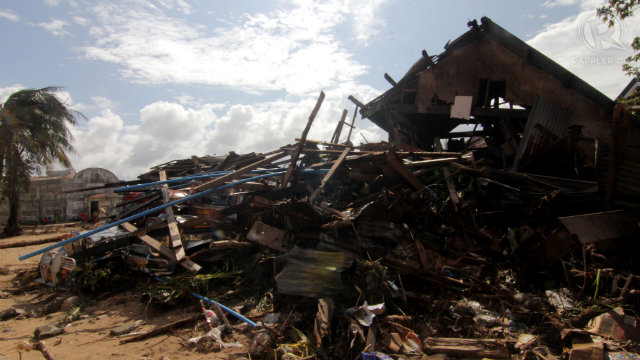SUMMARY
This is AI generated summarization, which may have errors. For context, always refer to the full article.

MANILA, Philippines – The Department of Public Works and Highway (DPWH) has built 116 bunkhouses in 3 provinces in Eastern Visayas, the National Disaster Risk Reduction and Management Council (NDRRMC) said on Tuesday, November 26.
NDRRMC executive director Eduardo del Rosario said one bunkhouse can house 24 families that will share a toilet and a kitchen.
The 116 bunkhouses, which can house 2,784 families or about 14,000 individuals, are in the following areas:
Leyte
- Tacloban – 10
- Palo – 11
Samar
- Basey – 18
- Marabut – 18
Eastern Samar
- Guiuan – 26
- Hernani – 30
- Giporlos – 3
The United Architects of the Philippines has offered the services of its members for free to design typhoon-resilient houses. It has deployed experts to assess the damage in the Eastern Visayas provinces, and to make recommendations to the DPWH. (READ: 8 features of a typhoon-resistant house)
Super Typhoon Yolanda left at least 5,240 dead and 1,613 missing, according to the latest NDRRMC data. Del Rosario said the casualty count is expected to increase as they are waiting for fresh reports from Tacloban City.
The initial cost of damage is estimated at P24 billion.
On the third week since Yolanda devastated parts of the Philippines, Del Rosario said 12 banks and 5 radio stations are now operating in Tacloban City. In Leyte province, small markets are also open. Del Rosario said the provincial government will invest in agriculture to help people become less dependent on relief operations.
The government is also finalizing long-range rehabilitation plans, Del Rosario said. It should be released in about 2 months, he said.
“We’re talking about long-range rehabilatation plans that can take 2 years to 5 years [to implement],” he said.
Informal settlers who used to occupy areas 40 meters from the shoreline will not be allowed to rebuild their houses. Del Rosario said the government will plant mangroves to mitigate the impact of future storm surges. (READ: Leyte reconstruction: MGB maps ‘no build zones’)
At least 2,400 electrical posts were also put up to replace those destroyed by Yolanda. The energy department earlier promised to restore electricity by Christmas. – Rappler.com
Add a comment
How does this make you feel?
There are no comments yet. Add your comment to start the conversation.